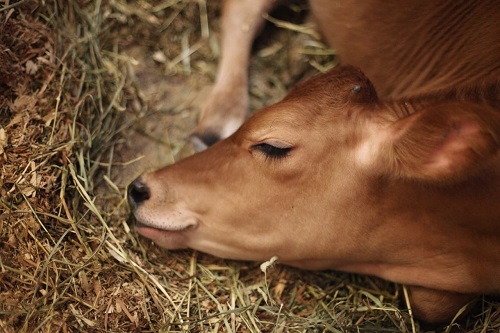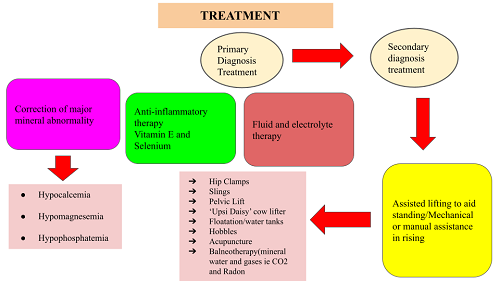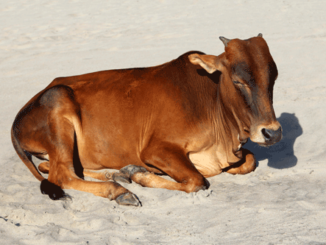The term ‘downer’ appeared in print as early as 1905 to describe debilitated cattle in the slaughterhouses of Chicago. The more specific term ‘downers cow’ first appeared in Veterinary literature in 1955. Downer cow syndrome is a serious problem that occurs with lower frequency in dairy farms but the care and handling of non-ambulatory cows is a major challenge to dairy producers and veterinarians.
Etiopathogenesis
Downers cow syndrome has no universal definition. A downer cow is one down for at least 24 hours without an apparent reason for being down (before the development of the sequelae of recumbency). All recumbent cattle are susceptible to muscular pressure regardless of the initial cause of recumbency. Experimental studies show that significant pressure damage can occur in the compressed upper limb as early as 6 hours after the initiation of decubitus beyond which tissue damage as a result of excessive weight bearing must be expected. This underscores the importance of handling any persistently recumbent cow as a “Medical Emergency”.
Downers cow syndrome can also be compared with crush syndrome in the sense that the sum of the systemic effects of extensive muscle injury is attributed to the massive release of muscle-tissue breakdown products into the blood circulation.

Primary causes of recumbency may be:
- Mineral imbalances: Hypocalcemia, hypomagnesemia, hypophosphatemia, etc.
- Severe Toxemia: Moderate reduction in plasma Ca, Mg and P
- Dystocia: Obturator nerve paralysis
- Pregnancy toxemic syndrome: Low plasma Ca,Mg,P and glucose
- Others: Fractures, coxo-femoral luxation, rupture of gastrocnemius muscle, lymphoma of spin

Creeper Cow
This term is used to denote alert recumbent cows that are unable to bear weight on their hind limb but that use the forelegs to propel themselves over short distances.
At the cellular level, transporter protein affects downer cow syndrome. Along with this besides mineral concentration disturbances in NEFA, glucose, insulin and glucose are observed.
Clinical Findings
Affected cows are:
- Bright and alert with good or only mildly alert depressed feed intake(alert downer cow) but make no effort or are unable to stand following calcium therapy
- Temperature is normal and heart rate may be normal or elevated to 80 to 100bpm
- Respiration is usually unaffected
- Defecation and urination are normal, but proteinuria is common that may indicate muscle damage if marked
- Unlike the front limbs, the pelvic limbs are always under the cow’s body and thus far more susceptible to compression damage.
About 50% of downer cow will stand within 4 days or less if cared properly.
Death may occur in 48-72 hours following the onset and is usually associated with myocarditis.
Diagnosis
- Most visible and statistically proven changes faces the total white cell neutrophils, amount of albumin, level of calcium and magnesium
- Moderate ketonuria and marked proteinuria
- Serum activity of CK (plasma half life in cattle is only about 8-9 hours)and AST (longer half life; for several days after initial trauma) are markedly elevated
- Apo B-100 and Apo A-1 concentrations were decreased in cows with milk fever and downer cow syndrome
- Increased blood concentrations of markers of hypoperfusion i.e. L-lactate(LAC) and cardiac Troponin 1(cTn1)
Prognosis
- Elevations of serum urea, muscle enzymes and laboratory incidences of inflammation are considered best prognostic indicators of unfavourable recovery
- Total protein: Fibrinogen ratio less than 1
- Neutropenia and/or left shift
- Serum urea level above 25mmol/l
- Serum creatinine levels above 130mmol/L
- CK values exceeding 1,00,000 IU/L or AST above 10,000IU/L
All these parameters can be evaluated to rate the prognosis of the animal
Therapy

Conclusion
- The real etiology is unknown
- Multiple factors contribute to Downer cow syndrome
- Treatment may vary, often to be personalized
- Protection of muscle damage and neural damage should be taken care of
- Correction of metabolic disturbance is necessary
- Hydrotherapy is adopted in most recent trends







Be the first to comment